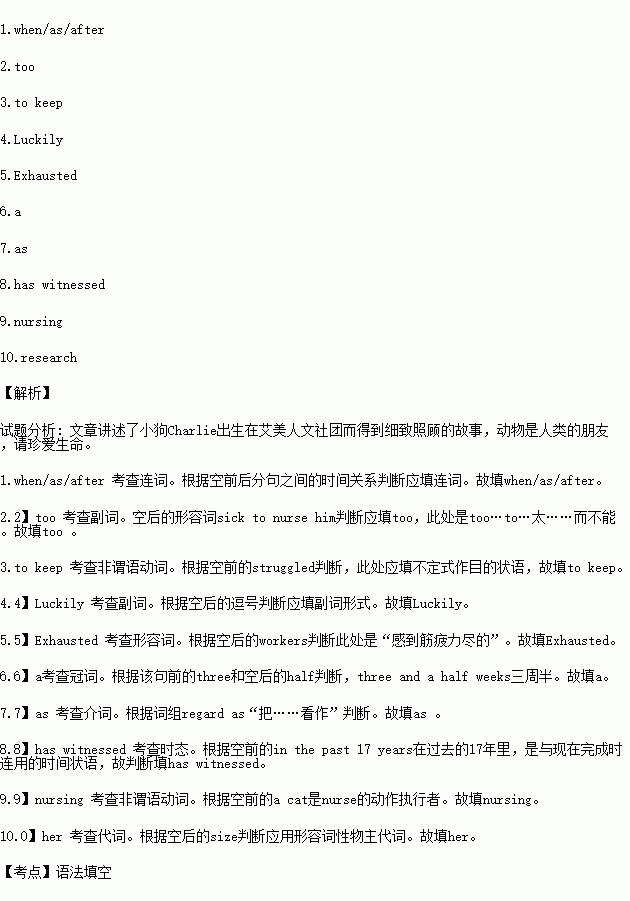题目内容
阅读下面材料,在空白处填入适当的内容 (不多于3个单词) 或括号内单词的正确形式。
Things didn’t look good 1. Charlie the dog was born at Meriden Humane Society. Charlie’s mother was 2. sick to nurse him, and workers struggled 3. (keep) the puppy healthy by bottle-feeding him every two hours. 4. (luck), Satin the cat came to the rescue.
5. (exhaust) workers hoped that Satin, who was feeding her own kittens, might be willing to add one more to her family. “She loved it when we put them together,” said director Dibianco. Satin fed Charlie for three and 6. half weeks. Her kittens regarded the puppy 7. a brother. In the past 17 years, the director 8. (witness) nothing like a cat 9. (nurse) a puppy at the shelter. “Satin still mothered Charlie even as he grew twice 10. size.” The director said.
 53天天练系列答案
53天天练系列答案
